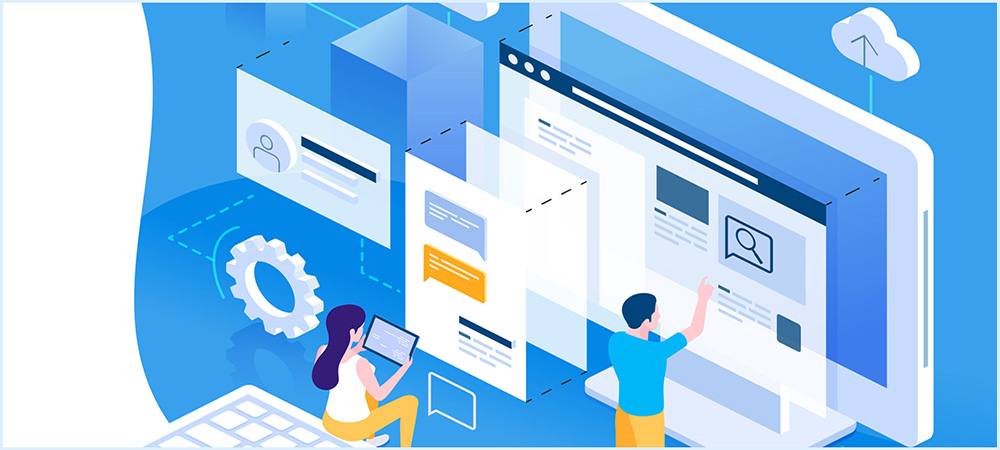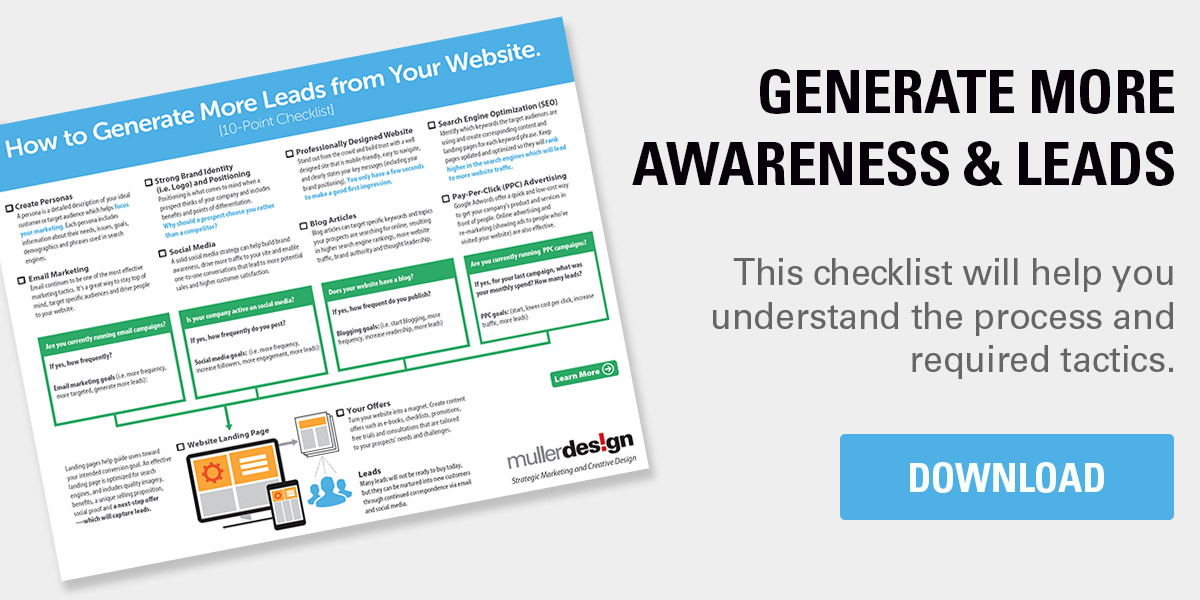
Your website is your most important marketing asset. Most of your marketing dollars will probably be focused on driving potential customers to your website, so your site needs to be:
- professionally designed in order to make a good first impression
- engaging and easy to use
- differentiating your brand from your competition
- telling your company story through your customers’ experiences
- generating leads
To ensure that your current website is optimized, or to make sure your next redesign is a success, follow these guidelines:
1. Start with a Plan
Just as you would never build a house without a blueprint, the same goes for a website. Make sure you’ve asked and answered the following questions:
- What are our goals for the website?
- Who are our users (personas)?
- What information do they need?
- What are our goals for each persona?
- What content & functionality is required to meet these goals?
- What’s our budget and timeline?
The plan should also include a requirements list, a sitemap, and a process to keep the site updated.
2. Identify and Understand Your Personas
As with all marketing activities, one should consider who the target audience (persona) is. A persona is a detailed profile of your ideal customer including their demographics, problems, issues, needs, etc. For more information about personas, check out our blog article “How to Increase Awareness and Leads: Start With Personas and Positioning”.
Many companies make the mistake of building a company-centric website—It’s all about them—their products and services, their story, their history, their team, and so on. Remember, your users have problems they’re trying to solve, so you need to understand what they are, and provide the solutions. A persona helps you focus your site content around the needs of your customer so you can build a user-centric website.
3. Avoid Template Designs
The lower cost of using a template may be tempting, but there are a couple of downsides. First, you risk looking like everyone else. And second, you’ll box yourself into the constraints of the template. Give yourself more design freedom with a custom designed site.
4. Include Your Brand Positioning
How do you want to be perceived by your ideal customers? Brand positioning will help you differentiate from your competition. One way to strengthen your positioning is to ensure your website content answers this question: Why should a potential customer choose you rather than your competitors?
5. Optimize for Search Engines
Identify which keywords your personas are using and create corresponding content and landing pages for each keyword phrase. Pages should address users’ needs and provide solutions. Keep pages updated and make sure to add keywords to page titles, page URLs, meta description and page copy. As you create relevant and quality content, others will link to it. These inbound links are a very important factor in Google’s search algorithm.
6. Include a Blog
Blog articles allow you to showcase your expertise on various topics, while also helping your site rank higher in the search engines. According to HubSpot, organizations that blog have on average 55% more website visitors and 125% more leads than those who do not. For ideas on what to write about, refer back to your personas’ needs, issues and challenges. You can also broadcast your blog articles on social media for even more exposure.
7. Mobile-Friendly Design
Since over 75% of site visits are performed by mobile devices, it’s imperative that your site is mobile-friendly and loads quickly. If not, you’ll lose potential customers. Take a look at your site on your mobile phone. How does it look? Is it responsive and easy to navigate? Is there too much content? Mobile users tend to be more fickle than desktop and laptop users, so make sure your site works well on mobile devices.
8. Professional Imagery and Video
Photos can make or break your site. Hire a professional photographer to take photos of your products, facilities, people, etc. If you’re using computer-generated imagery (such as CAD models) make sure the resolution is high enough so images look crisp on high definition screens. Most users prefer to view videos rather than reading lots of text so make sure to include product videos, testimonials and stories about your customers using your products and services.
9. Include Social Proof
Social proof refers to the influence actions and attitudes that others have on our own behavior. If we see that others have had a good experience with the product or service, we’re more inclined to buy. Social proof plays off of the wisdom of the crowd mentality.
A company can use social proof to say “Don’t take our word for it, just ask our customers.”
Examples of social proof to consider using on your website include:
- Customer testimonials
- Case studies
- Videos of customers using your product or service
- Industry expert or influencer endorsements
- Product ratings and reviews
- Certifications from authoritative industry groups
10. Call-to-Actions (CTAs)
After you’ve attracted a visitor and impressed them with your professional design and brand positioning, make it easy for them to take the next step. Use landing pages and offers to capture leads. Some of our clients’ most effective CTAs include:
- troubleshooting guides
- coupon codes
- request for free assessment
- market study summaries
- design guides
- request for a product demo
11. Include and Track Analytics
It’s important to measure your marketing efforts, including what’s going on with your website. Analytics allows you to see how users are interacting with your website so that you can make the necessary adjustements to increase engagement and conversions. We use Google Analytics which allows us to view metrics such as:
- Number of visits
- Number of page views
- Most popular pages
- Bounce rate
- Average time on site
- Average pages viewed per visit
- Conversions (downloads, email sign-ups, form submissions)
It’s a good idea to view your analytics at least once per month. Using the information, you can assess if your website content is engaging and effective. If users are leaving your site without converting, then most likely you need to enahance content and/or design.
Implementing these elements and guidelines as you evaluate your current site, or during your next website redesign will greatly increase your chances of success.
I hope you find these suggestions helpful. Feel free to contact me with any questions.

